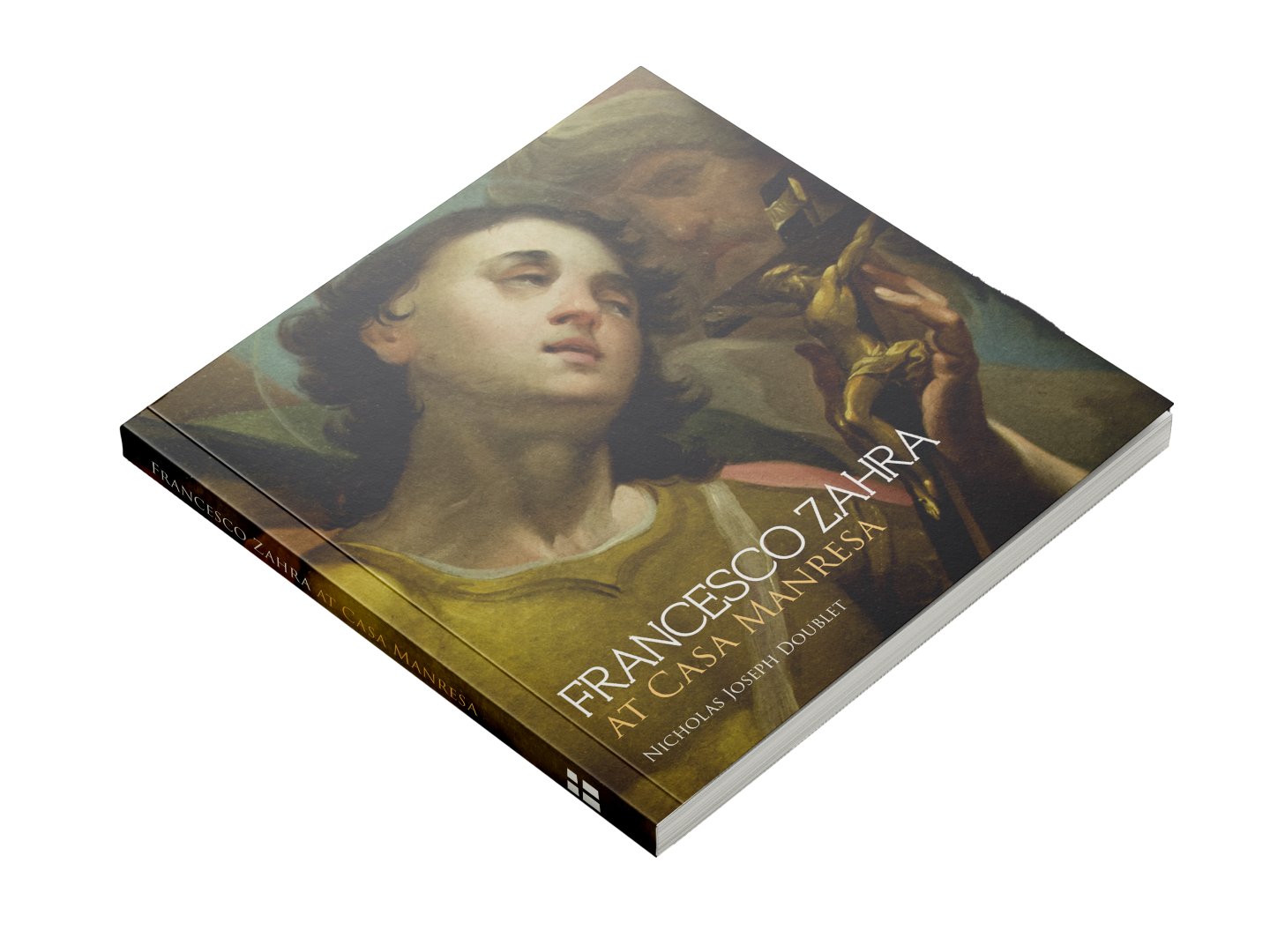Francesco Zahra was entrusted with the execution of a set of fourteen paintings of episodes from the Passion of Christ, of which a selection will be on display, including loans from the Cathedral Museum. Currently, these paintings are undergoing restoration, and three of them on exhibition showcase different stages of this process.
Two devotional paintings by Zahra portray St Paul and St Francis Xavier both struggling at sea, presenting an unusual iconography that is specific to the Jesuit retreat house. Another larger set of devotional paintings on display is the series of oval portraits of Saints whose exemplary lives were worthy of imitation.
The chapel of St Calcedonius was embellished by Zahra, who painted the titular painting, as well as two side paintings, all reflecting key moments of the Saint’s life and martyrdom. One painting was found to be dated 1756 during its recent restoration. The ceiling of the entrance to the chapel was also entrusted to Zahra.
The exhibition is accompanied by an exhibition of Archival Documents about Francesco Zahra at the Diocesan Archive (AAM), Floriana which record the life and work of Francesco Zahra. Each of the exhibits represents a different parish with which the artist was connected, from Ħ’Attard, Ħal Għaxaq, Gozo, Mdina, Mosta, Qrendi, Senglea, Valletta, Żejtun, to Żurrieq. The documents range from 1717, where Francesco Zahra is listed with his family, living in Senglea, to 1774, the year when his son Aloisio was ordained at the Archbishop’s Seminary in Mdina.
On the occasion of the exhibition, which commemorates the 250th anniversary of the death of the artist, a book titled Francesco Zahra at Casa Manresa by Rev. Dr Nicholas Doublet has been published by the Archdiocese of Malta. The book is fully illustrated with both paintings and archival documents and is available for sale at the Curia.
The exhibition, displayed on the ground floor of the Archbishop’s Curia, will remain open till 2nd December. It will be open to the public from Monday to Friday from 9am to 4:30pm, and on Saturday from 9am to 12pm. Entrance is free.
Two events will be organized around the exhibition, and will be held inside the Refectory of the Archbishop’s Curia:
- On Wednesday, 18th October at 7pm a public talk about the exhibition of paintings and archives will be given by Rev. Dr Nicholas J. Doublet, while the book Francesco Zahra at Casa Manresa will be reviewed by Alex Vella Gregory and Dr Theresa Vella.
- On Tuesday 14th November at 7pm, Rev. Dr Nicholas Doublet will introduce the ongoing restoration project on the paintings by Francesco Zahra, with presentations to be given by the painting conservators Amy Sciberras and Valentina Lupo.
The events are open to the public. Attendance is free. Visitors will also have the opportunity of viewing the exhibition Francesco Zahra at Casa Manresa.
Francesco Zahra at Casa Manresa
An important aspect of the Catholic reform was its emphasis on the cult of the saints, in response to the Protestant Reformation. This brought about a renewed interest in the catacombs and early Christian art, as they strengthened the apostolic claim of the Roman Church. For nearly four centuries, between the 16th and 19th centuries, corpi santi were extracted from Roman catacombs and gifted to churches all over Europe and the world.
A book, titled Francesco Zahra at Casa Manresa by Rev. Nicholas J. Doublet, is on sale for €18 at the Cash Office of the Archbishop's Curia,
On the occasion of the 2023 Open Day, as well as the public events taking place on 18th October and 14th November, the book will be on sale for €15.
The chapel of Saint Calcedonius was decorated by the Maltese painter Francesco Zahra (1710-1773), a master of religious paintings in the Neapolitan Baroque style. The chapel was built at the back of the main altar, with a separate entrance on the side of Casa Manresa, so as not to disturb the retreatants. The relics could thus be venerated from the sides of the altar in which they were kept.
The titular painting depicts Saint Calcedonius in prison awaiting the crown of martyrdom. This is flanked by two panels portraying the saint’s Refusal to worship idols and the Martyrdom of Saint Calcedonius. The ceiling of the entrance hall leading to the chapel portrays an Allegory of the Order of Saint John.

Main Corridor
Courtyard Side
Main Corridor
Chapel Side